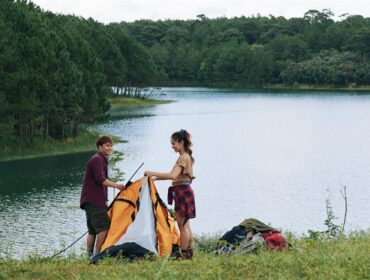Exposure to poisonous plants while enjoying the warm weather can quickly ruin your summer fun. Here are five of the most common poisonous plants in North American and tips on how to avoid coming in contact with them while hiking, camping, or relaxing in your yard.
1. Water Hemlock
This wildflower is sometimes called the most toxic plant in North America. While it may look like edible parsnips or celery, eating water hemlock (part of the carrot family) will result in violent convulsions, cramps, and nausea. Consuming this plant can be fatal; those who survive exposure to the poison may have lasting tremors and/or amnesia.
2. Oleander

Though it’s one of the most common poisonous plants in the United States, oleander is a shrub that produces gorgeous, vibrantly colored flowers. Because of its beauty and the fact that it can grow in most climates, it’s a frequent garden addition. However, simply handling the leaves can bring on severe symptoms that include vomiting, diarrhea, excess salivation, cramping, irregular heartbeat, poor circulation, tremors, seizures, coma, and death.
3. Rhubarb Leaves

While the stems of rhubarb are delicious, eating the leaves of this plant is toxic to humans. Symptoms of the poison include breathing problems and burning in the mouth and throat. Within an hour of exposure, the person will experience convulsions, internal bleeding, coma, and death.
4. White Snakeroot

This herb, characterized by small white flowers, has been attributed to the death of Abraham Lincoln’s mother. Direct exposure is not required for ill effect; in fact, Mrs. Lincoln became sick after drinking a milk from a cow that had eaten white snakeroot. Symptoms include loss of appetite, nausea, weakness, abdominal pain, reddened tongue, and death.
5. Jimson Weed

Not only is jimson weed one of the most common poisonous plants, it was used by soldiers at the Jamestown settlement to disable British attackers. Symptoms include hallucinations, abnormal thirst, delirium, incoherence, and coma, eventually leading to death.
Featured Image from Universal Eye/Unsplash




